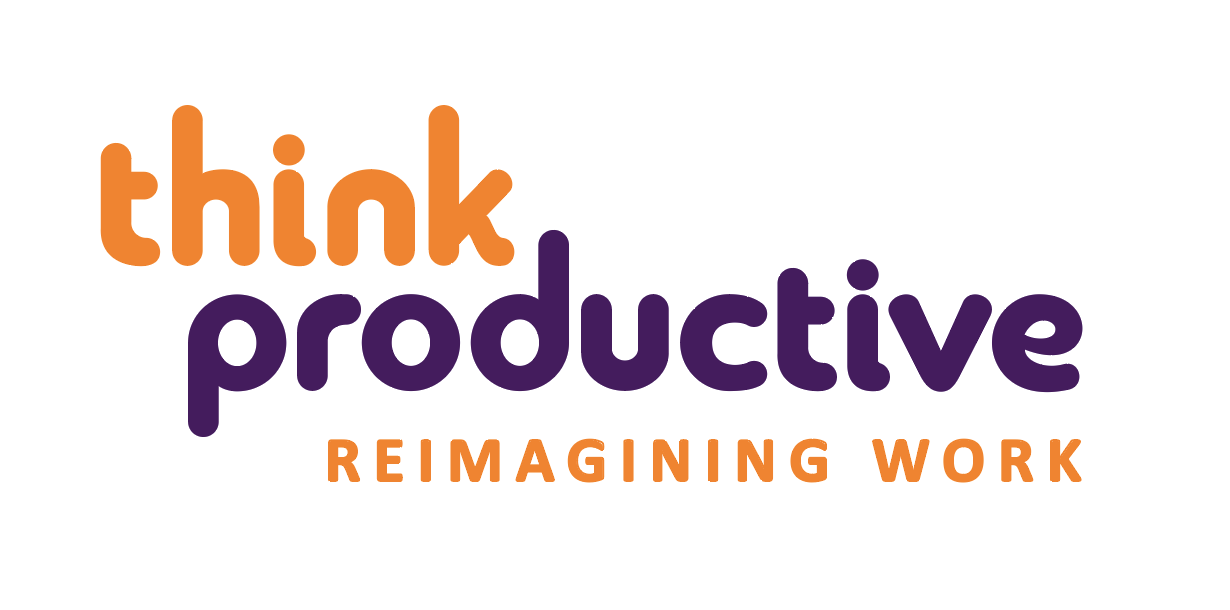The balance between life and work is extremely important, and yet difficult to get right. At Think Productive we try to encourage a healthy balance among all our employees and even our clients. Although, we understand how a busy schedule can take its toll, finding a balance between work and life includes managing workplace stress with daily demands, whether that be family, friends or oneself. That’s one of the many reasons why we offer Time Management Training. In the modern day, there has been a demand for employees to have greater control over their lives and as such, creating a culture of healthy balance has become more imperative for businesses to manage. Leading to somewhat of a competitive advantage within talent recruitment.
According to a recent Business Information Review publication, “the search for work-life balance is a process in which people seek to change things in accordance with changes in their own priorities, physical, psychological or both, and these can be triggered in their turn by factors such as: age; changes in working conditions; the demands of new technology; and poor management.”

Why Work-Life Balance is Important
A recent study by the Hay Group, found that 39% of respondents indicated that they did not have a right balance between their work and personal lives. More prominently, 27% of employees said they worked for a company that didn’t support work-life balance and indicated that they planned to leave said company within the next two years.
The research discovered that although specific practices are necessary for the logistical nature of work-life culture, the businesses that show that they value a healthy balance are the ones that enable workers to do their jobs more effectively.
Some traits which they found exemplified a healthy work-life balance culture include:
Ensuring that employees have adequate tools and resources
- Investing in training and development to ensure that employees have the knowledge, skills, and abilities they need
- Encouraging and enabling cross-functional collaboration
- Implementing policies and procedures that distribute workloads evenly
- Providing clear organisational direction that allows employees to prioritize their work

What Does Work-Life Balance Culture Look Like?
In a 2008 study, Steingerdur Ólafsdottir researched an Icelandic software consulting company which was identified by employees as supporting a balanced culture. The study found that traits which resemble a healthy working culture are: fun, ambition, flexibility, openness, cooperation, informality, flat organisational structure, trust, responsibility, support and pride.
Ólafsdottir also identified several ways in which leaders created this type of culture:
- They were understanding of employees needs and concerns
- They made themselves available to employees
- They were supportive of employees when they encountered challenges
- They demonstrated trust of their employees
- They gave their employees feedback on their work

You may be thinking that those traits simply resemble good management, more than a curation of a healthy culture. Although, that is essentially what it is, organisations which intentionally manage culture through the enablement of employees, both in their corporate and private lives, are more likely to attract and retain talent. Culture can be built to encourage a healthy, potentially still busy, lives for employees, however, it starts with the company.
It’s Down to the Company
As the organisation is the one in charge of implementing and enforcing practices within the workplace, it is fundamentally responsible for the effect those practices have on employees. If a healthy work-life balance is desired, it starts with the company management’s realization and consequential implementation of such balance.
A study published in American Sociological Review, found that seven out of ten American employees struggle to achieve an acceptable balance between work and family life. A number which has been rising over time, leading to employees, especially parents, feeling stressed and burned out. Therefore, it is integral to the organisation’s efficiency that a cultural shift is created and new practices are implemented, starting in the office.
Encouraging Work-Life-Balance in the Office
To create a work-life balance culture within the organisation, practices should be implemented initially within the office. A healthy work-life balance is comprised of a relationship between two main variables; the implementation of practices by the organisation and the level of adoption by employees. Looking at the organisational view of work-life balance, there are five practices that can be introduced:
Maintain Structural Consistency
If employees feel stressed due to a hectic schedule, whether it be work or personal, a level of consistency can help ease that burden. By offering consistency in the job role, it allows employees to know what to expect at work and as such, anxiety can be reduced. A steady work environment can counteract personal stress and play an integral part in a good work-life balance.
Encourage Short Breaks Throughout the Day
This is something especially recommended by our Productivity Ninjas. Having breaks from work is important to both mental and physical well-being. Working without breaks can lead to a variety of health issues as well as a reduction in productivity and engagement.

Allow Flexible Schedules
Depending on the business, different methods of working can be implemented. Remote working can be used to maintain productivity in a period which an employee can’t make it into the office. For example, working parents when their child falls ill, offering to work from home allows deadlines to still be met whilst taking the stress out of the situation.
More Vacations
For many organisations, vacations are limited to a standard of two weeks. However, studies show that this is not enough and that more vacation allowance, not only improves work-life balance, but also productivity. This is particularly the case for smaller companies and start-ups where employees can feel pressured to work every day, despite the unhealthy nature of such work ethic. It is important that managers also encourage employees to use the vacation allowance, opposed to just providing it – leading by example as a manager, can help to remove the “bad reputation” of taking advantage of one’s vacation allowance.

Offer Unpaid Leave for Life Events
An essential factor in creating a healthy work-life balance is reducing stress. Significant life events can cause massive amounts of personal stress for employees, and can often be rather complicated to handle. By offering time off for events which may not fall under the norm, would be greatly appreciated by employees. It also reduces the possibility of them working while being distracted, which decreases efficiency. An example of these events may be to extend maternity leave, allow an employee time to care for a seriously ill family member or even offer leave to valuable employees looking to attend graduate school.
The Manager’s Role
Although, practices can be introduced into the workplace to encourage a healthy work-life balance, it’s down to the boss to ensure that the culture is adopted effectively. It’s important for leaders to make sure that their words and actions are in line with what they are asking of employees.
Harvard Business Review conducted a study, of 19,000 employees around the world, focused on how they experience their lives at work. They found that companies seeking more sustainable high performance from their employees need to meet four of their core needs: renewal (physical); value (emotional), focus (mental) and meaning and purpose (spiritual).
Leaders who actively support ways of working in the four dimensions, provide a positive impact on employee engagement and satisfaction. Further to this, when leaders model their own behavior, the effect on employees is much larger. However, only 25% of respondents said that their leaders model sustainable work practices. The attitude and behaviors of leaders have an immense influence on the employees view of work-life balance. The study found that a leader who “communicates a vision that is clear, consistent, and inspiring” reported 65% higher engagement and 82% higher job satisfaction from employees. They were also 1.3 times more likely to stay with the organisation.
Ask Your Team for Guidance
It is important to know that every organisation is different, unique in their practices, employees, clients, etc. As such, to truly get a healthy work-life balance, the practices and culture need to be tailored to those in the organisation. Whom better to consult about what to offer employees, than the employees themselves!
If there seems to be a struggle with work-life balance, then ask them how the situation could be handled better. By having scheduled meetings and regular feedback, discussions about issues can flow more efficiently.
Before you leave…
For more information on how you can better manage your time and attention, why not check out our Time Management Workshops to see how we can help?
If your company facilitates a great work-life balance or you have any tips on how to achieve it, let us know in the comment section below or tweet us @thinkproductive
By Miles Singleton
Miles is Think Productive’s Editorial Content Producer.


This is a great blog. And subject matter that I talk about a lot. There seems to be an astonishing lack of understanding (by leaders within companies that I have worked with in recent years), that there is a direct link between the wellbeing and engagement of people to the efficiency and success of a business.
Also lots of well-meaning leaders out there who care about their people and talk to their teams about getting balance but seem unable to role model the behaviours themselves for one reason or another.